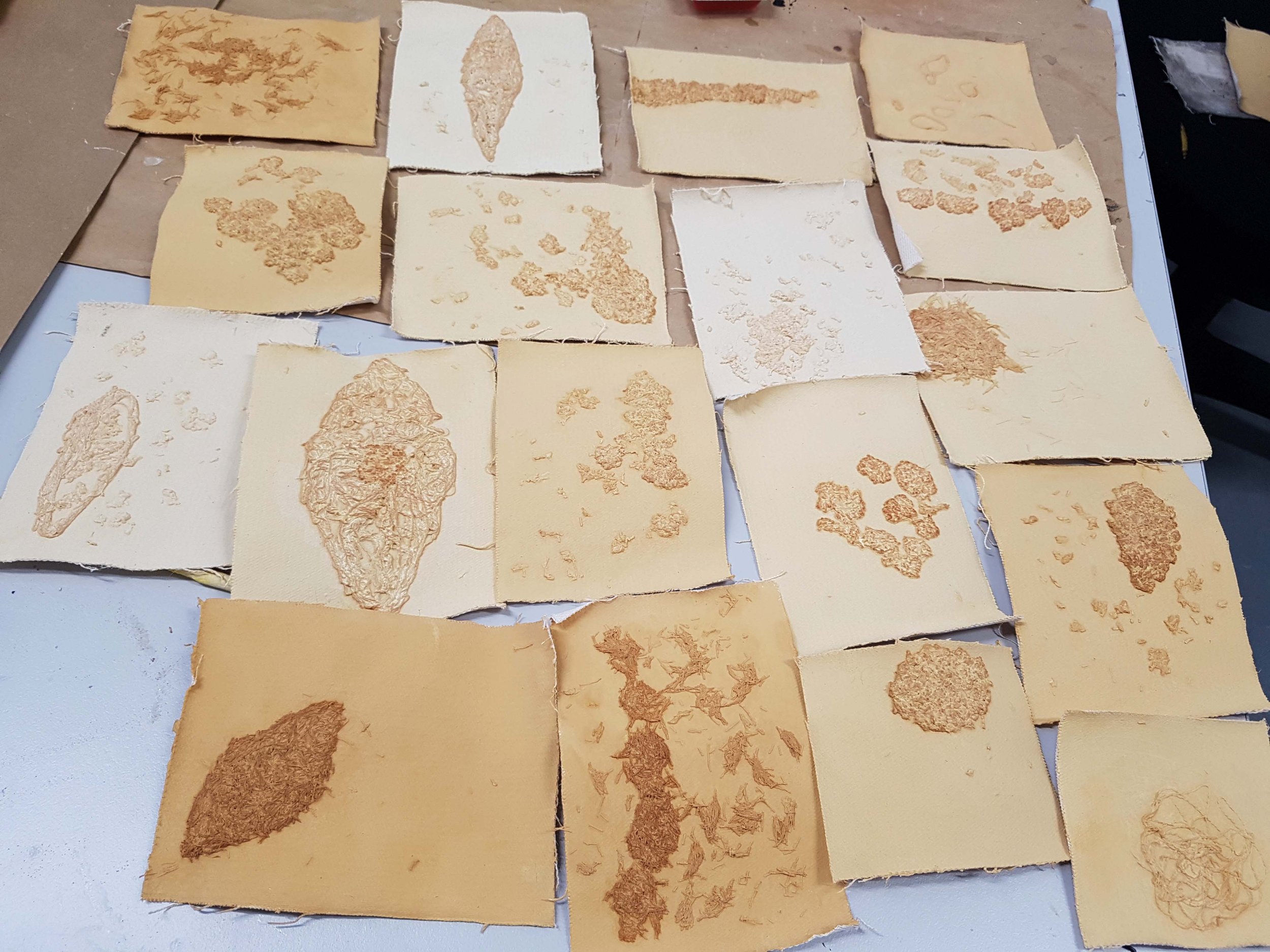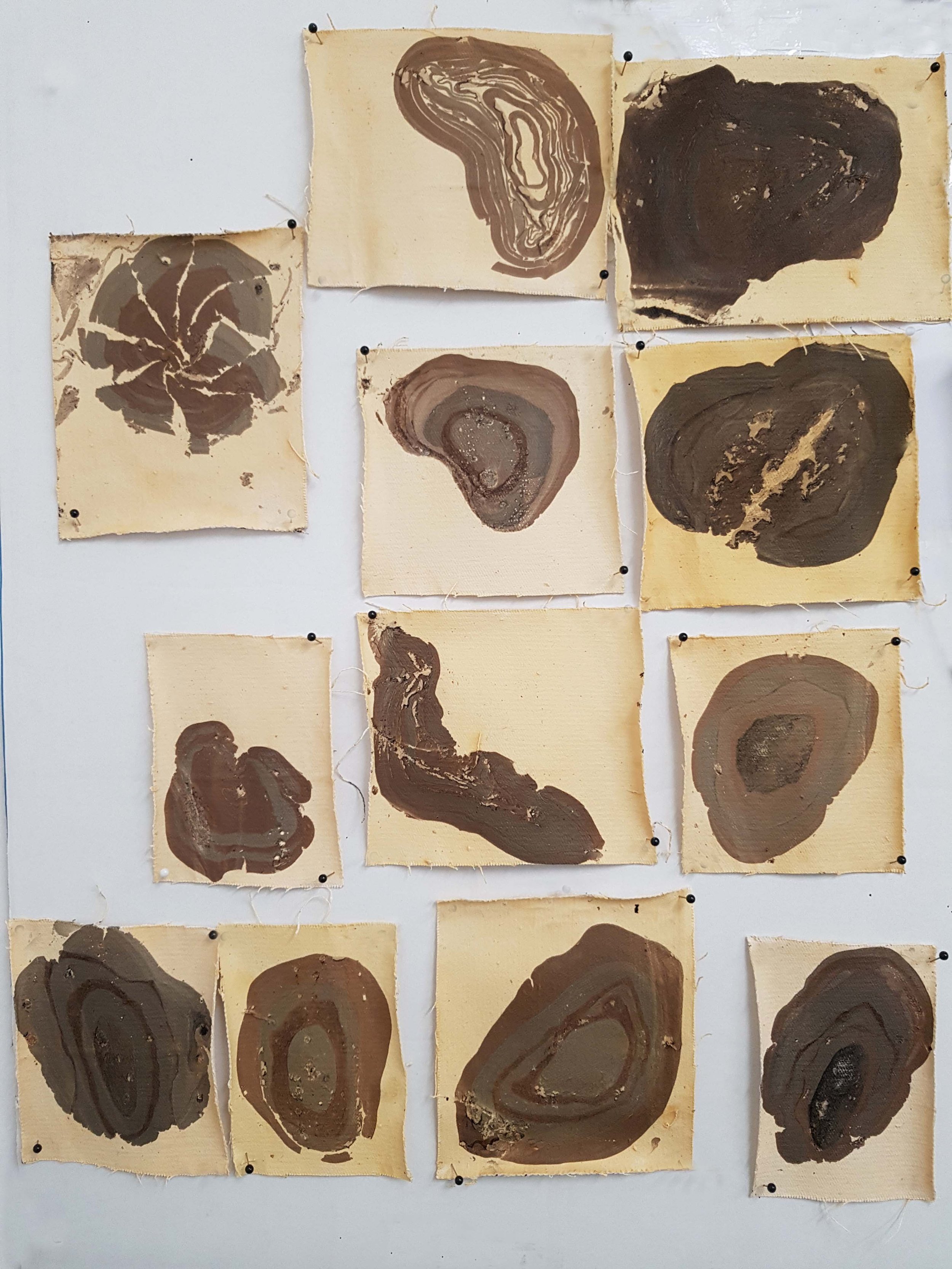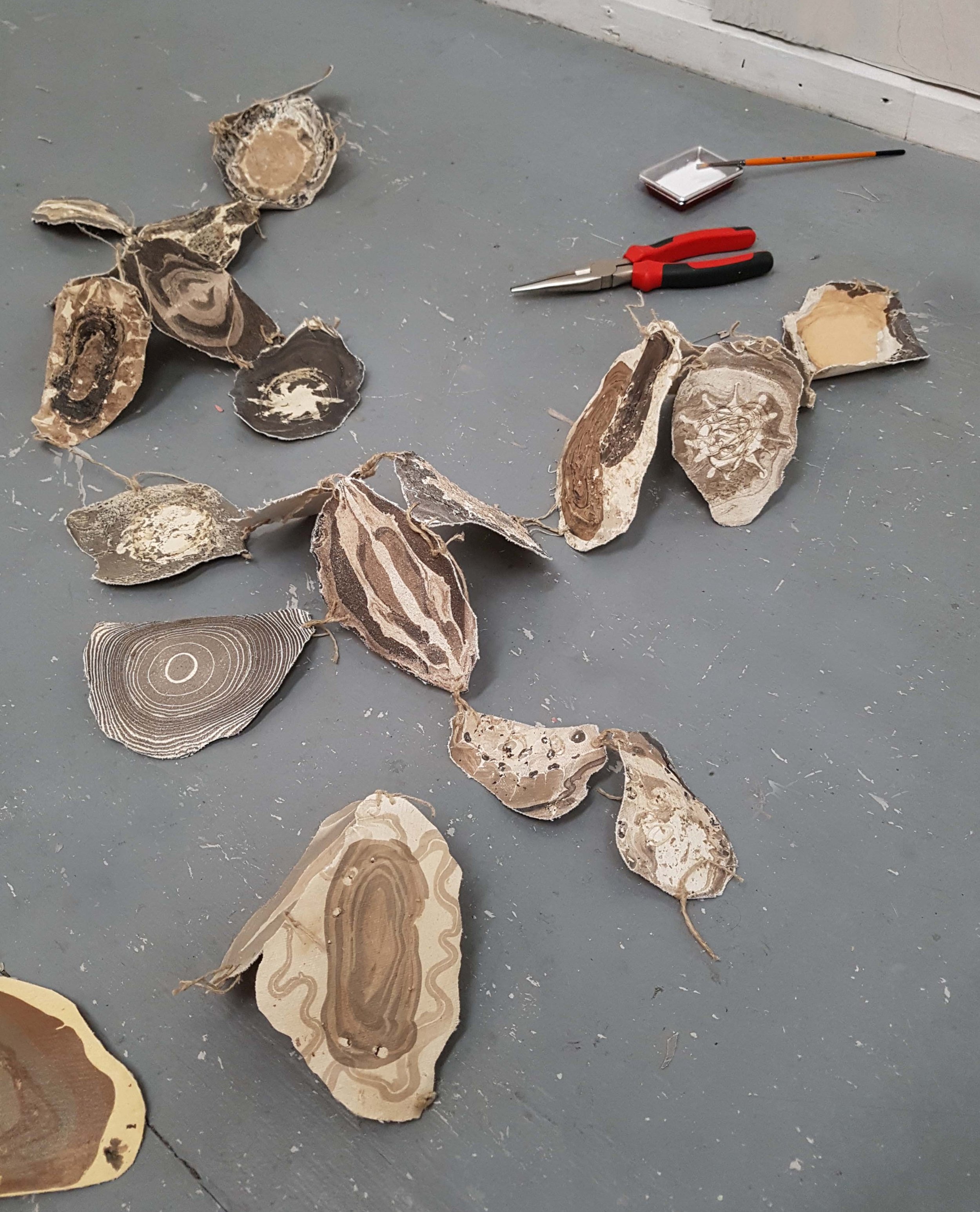Remnant
Remnant (detail), 2019, milk, acrylic paint and detergent on canvas, Kerman desert sand, Australian beach sand, 510 X 270 cm, photograph by Yashar Zadeh, Site Eight Gallery, RMIT University.
Central to my practice is the experimentation and development of new methods and techniques that can visually express the patterns derived from demise, decay and erosion. Marbling though the use of milk, acrylic paint and detergent is a technique that I came across while watching a video about the chemical reaction of materials on one another. Since then, I have adapted this method and through experimentation, I was able to create two visual effects relevant to my (Master’s) project: the first, a visual correspondence to geological features as seen on Google Earth’s satellite images; the second, a visual evocation of fossils or microscopic creatures.
I made a considerable number of prints on a range of textured surfaces, before cutting around the curved, irregular edges of the resultant forms and sewing them together loosely with thick string. I divided the sewn pieces into different island-like sections and laid them on the ground with their upward edges exposed in the air, forming small, incomplete pyramids. To visually connect the arranged pieces with their support—the floor—I scattered a combination of natural Australian sand and Kerman desert sand; to attain a level of contrast and create a three-dimensional look, I darkened some parts of the sand through a previously trialled cooking technique. The result immediately suggests discarded leaves in piles, however, on closer inspection, the patterns of imprinted species seem to appear in variety.
The work Remnant (2019) references the reduction of a once huge biotic community that gradually became isolated and perished. Presented on a bed of sand, the small island-like ‘remnants’ allude to both life and loss; even though they appear shrivelled and faded in the sandy ‘desert’ environment, they are neither static nor ‘dead’. Suggesting a state of flow and movement, they appear to be in a search of a way to survive. This work refers to the vulnerability of a biotic community to the impacts of climate change—and the momentous issue of survival. I intended to provide a view of the consequence of the shift in climate and bring to light the likely irreversible impacts on landscapes and communities of flora and fauna as identified and witnessed in the Kerman geologic record.














